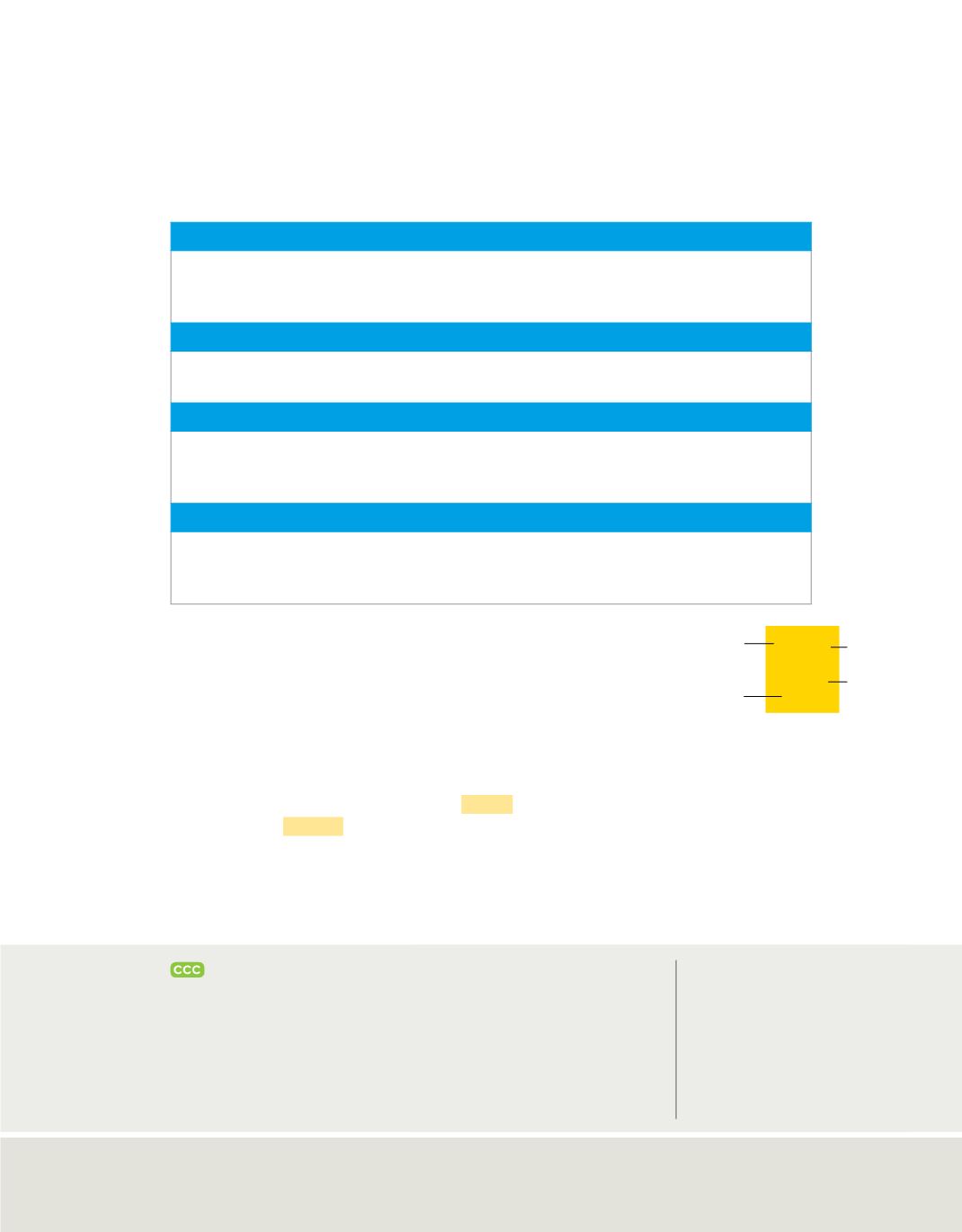

C06_005A
Atomic
number
Element
Oxygen
15.999
Atomic
mass
Symbol
8
O
Figure 3
A typical box from the
periodic table contains the ele-
ment’s name, its chemical symbol,
its atomic number, and its atomic
mass.
Table 2
summarizes the contributions of Newlands, Meyer, Mendeleev, and Moseley to
the development of the periodic table.
The periodic table brought order to seemingly unrelated facts and became a significant
tool for chemists. It is a useful reference for understanding and predicting the proper-
ties of elements and for organizing knowledge of atomic structure.
Table 2
Contributions to the Classification of Elements
John Newlands (1837–1898)
• arranged elements by increasing atomic mass
• noticed the repetition of properties every eighth element
• created the law of octaves
Lothar Meyer (1830–1895)
• demonstrated a connection between atomic mass and elements’ properties
• arranged the elements in order of increasing atomic mass
Dmitri Mendeleev (1834–1907)
• demonstrated a connection between atomic mass and elements’ properties
• arranged the elements in order of increasing atomic mass
• predicted the existence and properties of undiscovered elements
Henry Moseley (1887–1915)
• discovered that atoms contain a unique number of protons called the atomic number
• arranged elements in order of increasing atomic number, which resulted in a
periodic pattern of properties
The Modern Periodic Table
The modern periodic table consists of boxes, each containing an
element name, symbol, atomic number, and atomic mass. A typical
box from the table is shown in
Figure 3
.
The table orders elements horizontally by the number of protons in
an atom’s nucleus, and places those with similar chemical proper-
ties in columns. The columns are called
groups
or families. The
rows are called
periods.
The periodic table is shown in
Figure 4
on the next page and on the
inside back cover of your textbook. Becoming familiar with the
periodic table will help you understand how the properties of
different elements relate to one another.
CROSSCUTTING CONCEPTS
Patterns
Different patterns can be observed in the periodic table. The patterns
organize and can predict the properties of elements. Compare and contrast the
periods and groups of the table, shown in
Figure 4
,
based on their atomic number
and atomic mass. Create a graphic organizer or other simple visual that will help you
and your classmates remember the patterns.
WORD ORIGIN
periodic
comes from the Greek word
periodos
, meaning
way around
,
circuit
Lesson 1 • Development of the Modern Periodic Table
141









